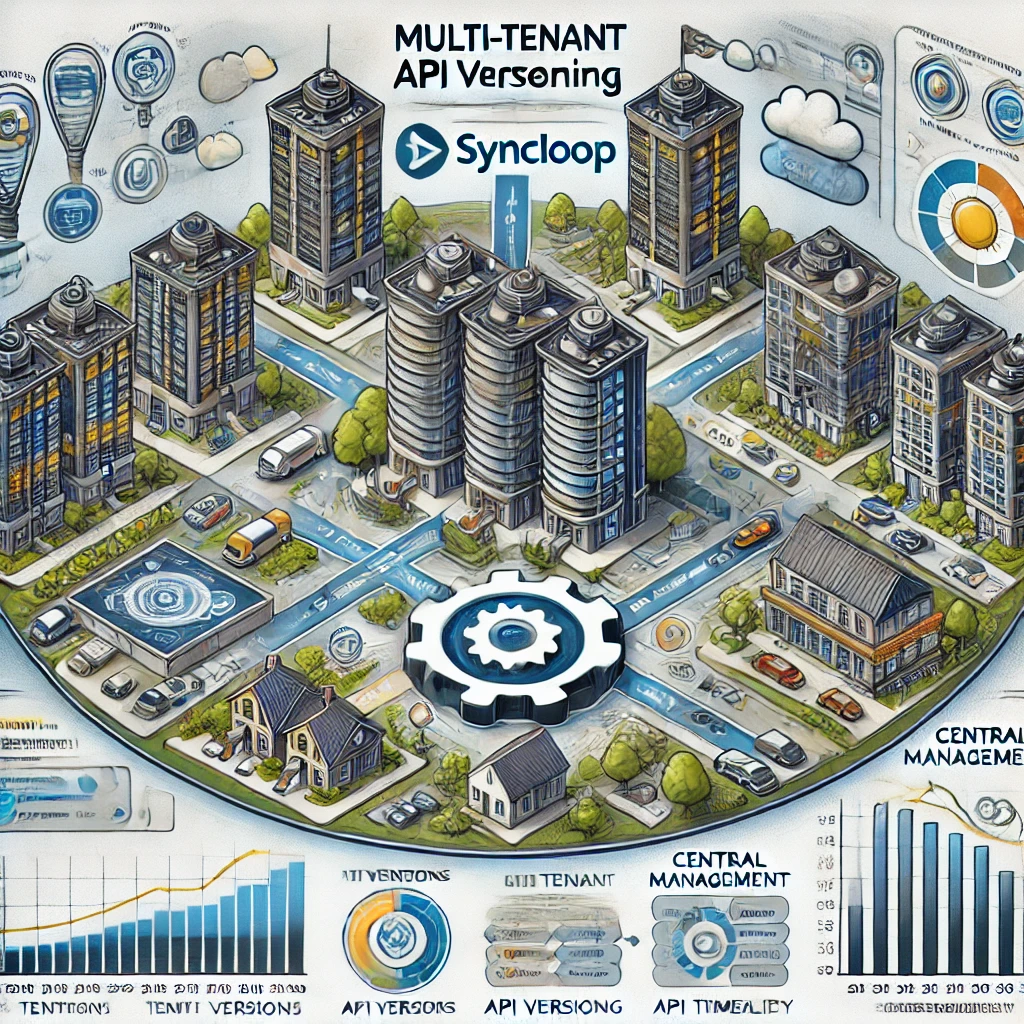A Guide to Multi-Tenant API Versioning in Syncloop

Syncloop simplifies multi-tenant API versioning with robust tools and intuitive workflows, ensuring that changes and updates to APIs can be implemented without disrupting tenant operations. This guide delves into the importance of API versioning in multi-tenant environments, how Syncloop facilitates it, and best practices for its implementation.
The Role of API Versioning in Multi-Tenant Environments
API versioning ensures backward compatibility, allowing existing tenants to continue using their preferred versions of APIs while new features or changes are introduced for others. Key benefits include:
- Tenant Flexibility: Tenants can upgrade to newer versions at their own pace.
- Stability: Older versions remain operational, ensuring uninterrupted service for tenants with legacy requirements.
- Scalability: Supports diverse tenant needs without requiring a one-size-fits-all approach.
- Change Management: Allows gradual implementation of updates, reducing the risk of disruptions.
How Syncloop Enables Effective API Versioning
Syncloop provides a comprehensive framework for managing API versions in multi-tenant environments. Key features include:
1. Version Tagging
Syncloop allows developers to tag APIs with version identifiers (e.g., v1, v2), ensuring clear differentiation between updates. Tenants can specify which version they want to use.
2. Dynamic Routing
With built-in routing capabilities, Syncloop directs API requests to the appropriate version based on tenant configurations or request headers, ensuring seamless versioning.
3. Backward Compatibility
Syncloop facilitates the maintenance of older API versions, enabling developers to fix bugs or make minor updates without impacting tenants using those versions.
4. Tenant-Specific Versioning
Developers can assign specific API versions to individual tenants or groups, providing tailored solutions without affecting the overall architecture.
5. Version Deprecation Workflows
Syncloop includes tools for managing API deprecations, such as notifying tenants, setting end-of-life dates, and transitioning users to newer versions.
6. Testing and Staging
The platform supports testing and staging environments for new API versions, ensuring they meet tenant requirements before full deployment.
Benefits of Syncloop for Multi-Tenant API Versioning
1. Simplified Management
With centralized version control, developers can manage multiple API versions efficiently, reducing operational complexity.
2. Enhanced Tenant Experience
Tenants gain the flexibility to adopt newer features at their convenience, ensuring a smooth transition without service interruptions.
3. Reduced Risk
Versioning reduces the risk of introducing bugs or breaking changes, as tenants can continue using stable versions until they’re ready to upgrade.
4. Scalability
Syncloop’s versioning capabilities enable platforms to grow and cater to diverse tenant needs, accommodating legacy and modern workflows.
5. Compliance and Customization
Versioning supports tenants with specific regulatory or business requirements by allowing them to retain access to older, compliant versions.
Real-World Applications of Syncloop API Versioning
1. SaaS Platforms
SaaS providers use versioning to introduce new features or updates without disrupting existing tenant operations, ensuring continuous service delivery.
2. Financial Services
Banking and fintech platforms rely on versioning to meet the diverse requirements of tenants, from legacy systems to modern digital interfaces.
3. Healthcare Applications
Healthcare platforms use versioning to maintain compliance with regulations like HIPAA for older APIs while rolling out newer functionalities.
4. E-Commerce Marketplaces
E-commerce platforms use API versioning to manage tenant-specific integrations, such as payment gateways and inventory systems.
Best Practices for Multi-Tenant API Versioning with Syncloop
- Use Semantic Versioning: Adopt a consistent versioning scheme (e.g., major.minor.patch) to clearly communicate changes.
- Document Changes: Provide comprehensive documentation for each API version, detailing new features, deprecations, and fixes.
- Implement Deprecation Policies: Set clear timelines and notify tenants in advance before deprecating older versions.
- Test Thoroughly: Use Syncloop’s staging environments to validate new versions before deployment.
- Monitor Usage: Track tenant usage of API versions and identify opportunities to encourage upgrades.
- Leverage Dynamic Routing: Use Syncloop’s routing capabilities to ensure seamless transitions between versions.
Conclusion
Multi-tenant API versioning is a critical strategy for maintaining service continuity and meeting the diverse needs of tenants. Syncloop’s powerful tools and intuitive workflows make managing API versions effortless, enabling businesses to deliver scalable, reliable, and tenant-friendly solutions.
By following best practices and leveraging Syncloop’s advanced capabilities, organizations can foster tenant satisfaction, reduce risks, and drive innovation. Whether you’re a SaaS provider, e-commerce platform, or healthcare system, Syncloop is your partner in mastering multi-tenant API versioning.
A visual representation of multi-tenant API workflows, highlighting version tagging, dynamic routing, and tenant-specific configurations, powered by Syncloop.
Back to Blogs